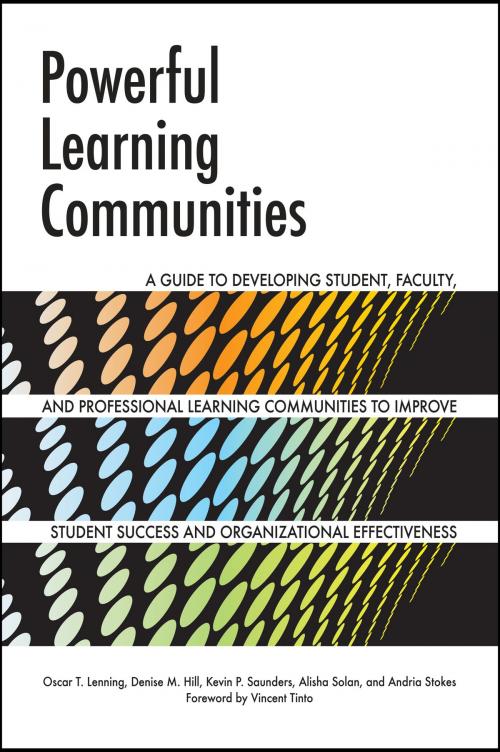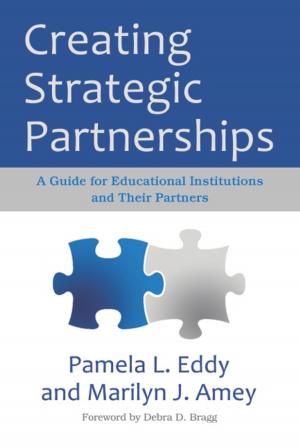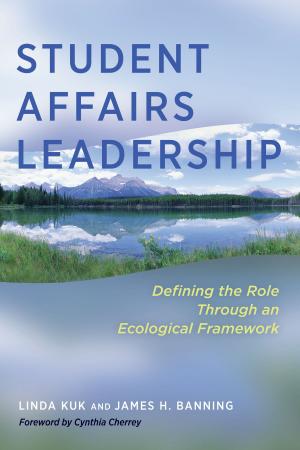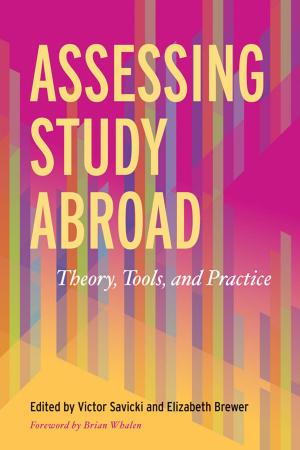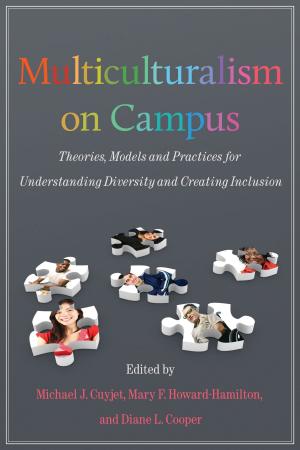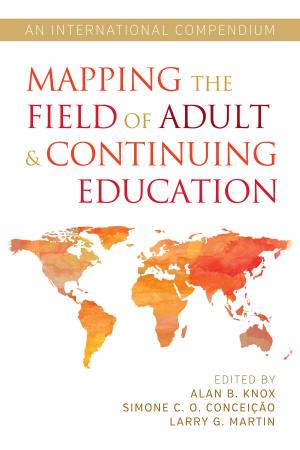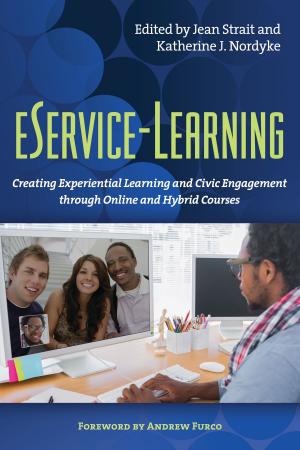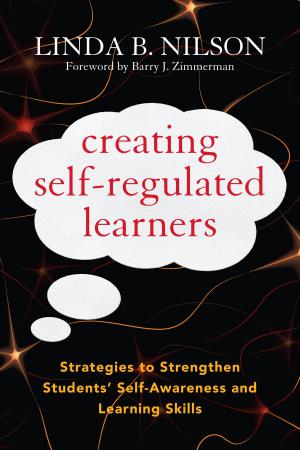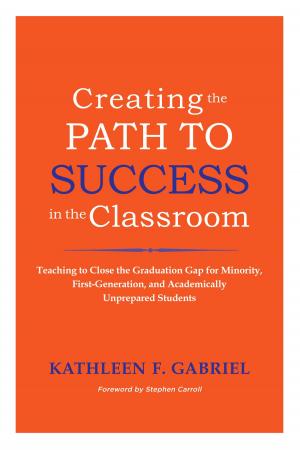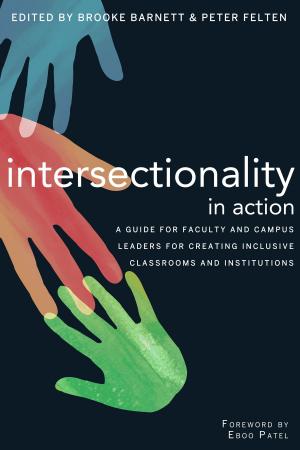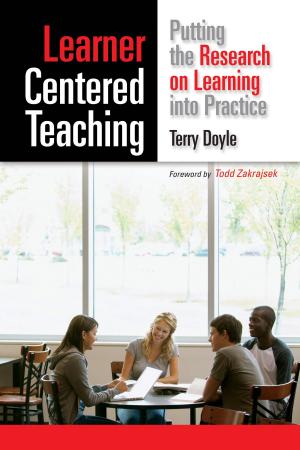Powerful Learning Communities
A Guide to Developing Student, Faculty, and Professional Learning Communities to Improve Student Success and Organizational Effectiveness
Nonfiction, Reference & Language, Education & Teaching, Higher Education| Author: | Oscar T. Lenning, Denise M. Hill, Kevin P. Saunders, Andria Stokes, Alisha Solan | ISBN: | 9781579225827 |
| Publisher: | Stylus Publishing | Publication: | October 1, 2013 |
| Imprint: | Stylus Publishing | Language: | English |
| Author: | Oscar T. Lenning, Denise M. Hill, Kevin P. Saunders, Andria Stokes, Alisha Solan |
| ISBN: | 9781579225827 |
| Publisher: | Stylus Publishing |
| Publication: | October 1, 2013 |
| Imprint: | Stylus Publishing |
| Language: | English |
“Oscar Lenning and his colleagues have produced a landmark scholarly and policy statement on effective learning communities. It should be read by every faculty member and administrator in postsecondary education who is concerned with maximizing the developmental potential of this powerful educational intervention for students.”?Ernest T. Pascarella, Professor and Mary Louise Petersen Chair in Higher Education, The University of Iowa
This book constitutes a comprehensive guide for readers who want a broad strategic view of learning communities, enabling them to identify which type of LC best meets the learning needs of their students, and the context and mission of their institution. It also provides the tools for planning, designing and implementing what the authors define as “powerful” LCs, and for understanding the assessment implications of their decisions, addressing three types of learning communities – student, professional (faculty, staff), and institutional LCs concerned with student learning
This book is organized around the three themes of setting the stage, designing an LC, and building or enhancing a powerful LC, and covers three types of learning communities – student, professional (faculty, staff), and institutional LCs concerned with student learning – providing a range of tools and forms to facilitate planning. The authors also address designing and maintaining hybrid and virtual LCs.
This book is intended as a practical resource for anyone at any level in higher education who wants to champion, develop or redesign student or professional LCs, or even explore broader initiatives to develop their institution into a “learning organization”. Administrators in academic and student affairs will find guidance for setting appropriate policies and allocating resources.
This book constitutes a comprehensive guide for readers who want a broad strategic view of learning communities, enabling them to identify which type of LC best meets the learning needs of their students, and the context and mission of their institution. It also provides the tools for planning, designing and implementing what the authors define as “powerful” LCs, and for understanding the assessment implications of their decisions, addressing three types of learning communities – student, professional (faculty, staff), and institutional LCs concerned with student learning
This book is organized around the three themes of setting the stage, designing an LC, and building or enhancing a powerful LC, and covers three types of learning communities – student, professional (faculty, staff), and institutional LCs concerned with student learning – providing a range of tools and forms to facilitate planning. The authors also address designing and maintaining hybrid and virtual LCs.
This book is intended as a practical resource for anyone at any level in higher education who wants to champion, develop or redesign student or professional LCs, or even explore broader initiatives to develop their institution into a “learning organization”. Administrators in academic and student affairs will find guidance for setting appropriate policies and allocating resources.
“Oscar Lenning and his colleagues have produced a landmark scholarly and policy statement on effective learning communities. It should be read by every faculty member and administrator in postsecondary education who is concerned with maximizing the developmental potential of this powerful educational intervention for students.”?Ernest T. Pascarella, Professor and Mary Louise Petersen Chair in Higher Education, The University of Iowa
This book constitutes a comprehensive guide for readers who want a broad strategic view of learning communities, enabling them to identify which type of LC best meets the learning needs of their students, and the context and mission of their institution. It also provides the tools for planning, designing and implementing what the authors define as “powerful” LCs, and for understanding the assessment implications of their decisions, addressing three types of learning communities – student, professional (faculty, staff), and institutional LCs concerned with student learning
This book is organized around the three themes of setting the stage, designing an LC, and building or enhancing a powerful LC, and covers three types of learning communities – student, professional (faculty, staff), and institutional LCs concerned with student learning – providing a range of tools and forms to facilitate planning. The authors also address designing and maintaining hybrid and virtual LCs.
This book is intended as a practical resource for anyone at any level in higher education who wants to champion, develop or redesign student or professional LCs, or even explore broader initiatives to develop their institution into a “learning organization”. Administrators in academic and student affairs will find guidance for setting appropriate policies and allocating resources.
This book constitutes a comprehensive guide for readers who want a broad strategic view of learning communities, enabling them to identify which type of LC best meets the learning needs of their students, and the context and mission of their institution. It also provides the tools for planning, designing and implementing what the authors define as “powerful” LCs, and for understanding the assessment implications of their decisions, addressing three types of learning communities – student, professional (faculty, staff), and institutional LCs concerned with student learning
This book is organized around the three themes of setting the stage, designing an LC, and building or enhancing a powerful LC, and covers three types of learning communities – student, professional (faculty, staff), and institutional LCs concerned with student learning – providing a range of tools and forms to facilitate planning. The authors also address designing and maintaining hybrid and virtual LCs.
This book is intended as a practical resource for anyone at any level in higher education who wants to champion, develop or redesign student or professional LCs, or even explore broader initiatives to develop their institution into a “learning organization”. Administrators in academic and student affairs will find guidance for setting appropriate policies and allocating resources.
